Food Trail, Bhutan
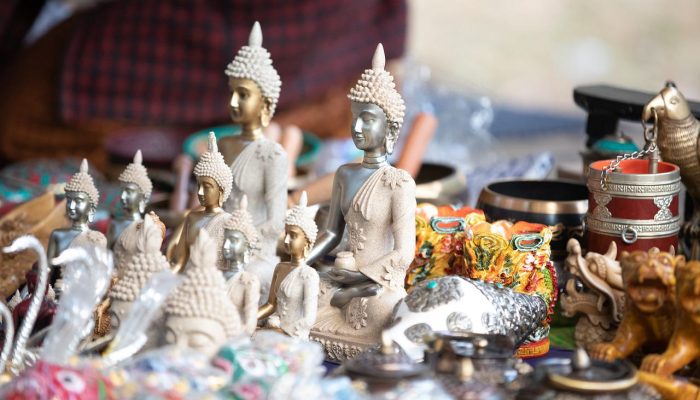
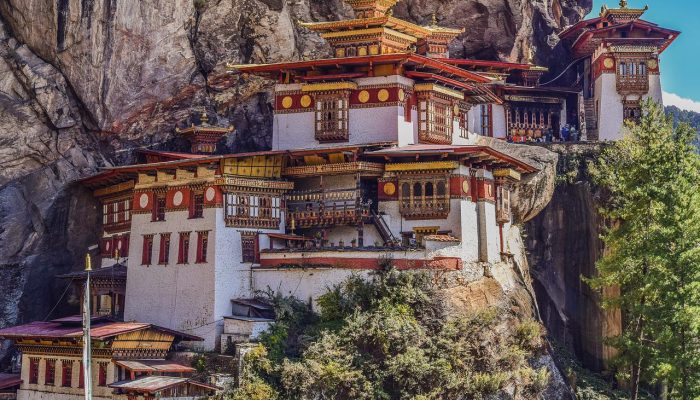
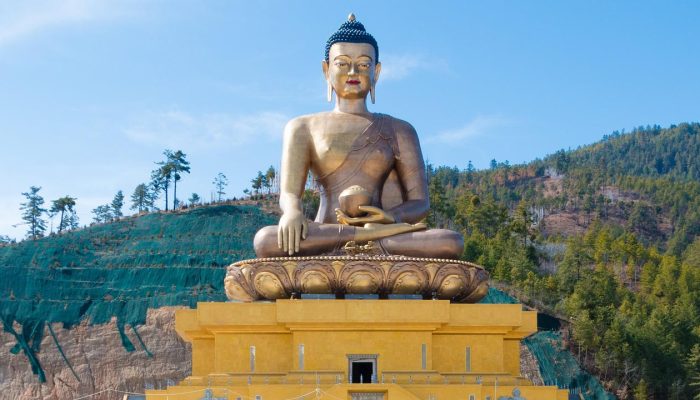
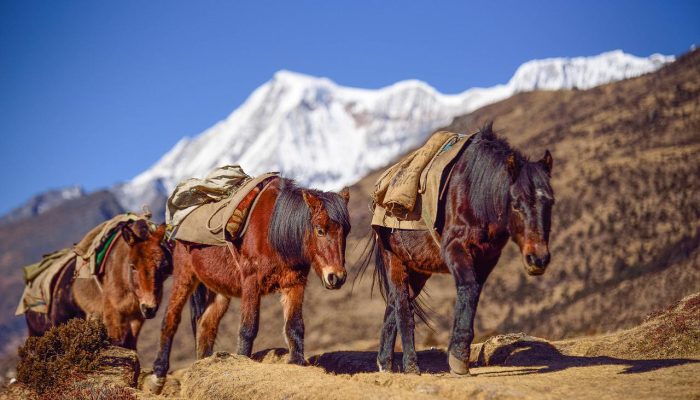
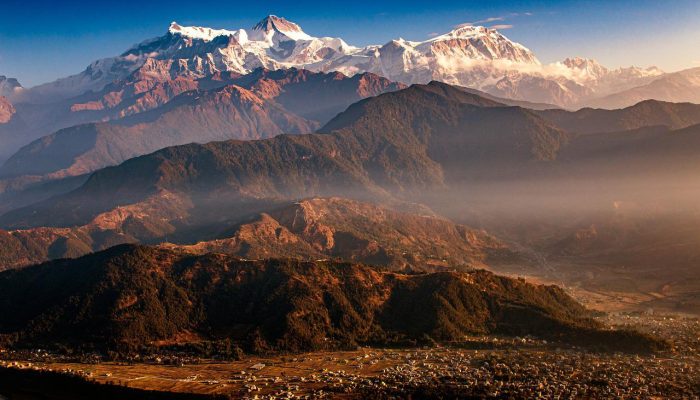
Sample Itinerary
DAY 1
Arrival Paro - Thimpu
After arriving & visa formalities and collection of baggage, you will be welcomed by our tour representative who will be your tour guide during your entire trip in Bhutan.
Check into your hotel in Thimphu. Free until lunch time for some rest from early morning flight, refreshment and lunch.
Afternoon, you can choose to visit any or all of the following places:-
Tachogang Lhakhang
Tachogang Lhakhang is located in Paro district, on the way to Thimphu. It was founded by Thankthong Gyelpo after he experienced a vision of Guru Rimpochhe, Amitaba and Avalokiteshvara near site. The caretakers today are said to be descendants of Thangtong Gyelpo. Inside the temple one can see the masters relics, including his walking stick.
Changangkha Lakhang
This popular temple, perched like a fortress on a ridge above central Thimphu, hums with pilgrim activity. It was established in the 12th century on a site chosen by Lama Phajo Drukgom Shigpo, who came from Ralung in Tibet. Parents traditionally come here to get auspicious names for their newborns or blessings for their young children from the protector deity Tamdrin (to the left in the grilled inner sanctum). Children are blessed by a phurba (ritual dagger) and given a sacred thread.
Tashichho Dzong
The Tashichho Dzong is a Buddhist monastery cum fortress at the northern edge of Thimpu the capital city of Bhutan. The Dzong was built on the western bank of the river Wang Chu, and has historically served at the seat of the DrukDesi or the Dharma Raja of Bhutan’s government. After the kings assumed power in 1907 this post was combined with that of the king and Thimphu severed as the summer caital of the kingdom before becoming the full time capital of Bhutan.
Overnight in Thimphu.
DAY 2
In Thimphu
After the breakfast we will drive to following places:
Kuensel Phodrang
The Kuensel Phodrang or the Buddha point isthe world’s largest sitting Buddha statue, the statue is 167 feet high. The statue is situated on top of a hill overlooking the city of Timphu, it can be accessed by road and is about 15 minutes away from the city’s center. The word Kuensel means everything is clear and from this place you will sure enjoy a great view of the Thimphu Valley on both sides. The statute will house a temple inside it, the statue and its adjoining car park and recreational center
Then we will visit to Bhutanese Farmhouse and we will try to make the national dish Ema Datshi (chilli & cheese) and other dishes like Pasha Paa (dried pork strips) with dry turnip leaves/Radish and red chilies. We will eat what ever we could make in the farmhouse with the red rice from their farm filed.
National Memorial Chorten
The National Memorial was built by Bhutan’s third king, H.M. Jigme Dorji Wangchuck who is also known as the “father of modern Bhutan.” He wanted to erect a monument carrying the message of world peace and prosperity. However, he was unable to give shape to his idea in his lifetime due to pressures of state and other regal responsibilities. After his untimely demise in 1972, the Royal Family and Cabinet resolved to fulfill his wishes and erect a memorial that would perpetuate his memory and also serve as a monument to eternal peace, harmony and tranquility.
Motithang Takin Preserve
The Motithang Takin Preserve also known as the Thimphu Zoo by many is a small natural preserve for the Takin Bhutan’s national animal.
It was originally a mini zoo, but it was converted in a preserve later on as the Takin. The mini zoo contained a small number of Takin but the King of Bhutan later decreed that it was improper for a Buddhist nation to keep an animal in captivity. The animals were set free and the zoo was shut down, but for some reason the Takin refused to leave the area for the forests nearby.
Semtokha Dzong
Simtokha Dzong also known as Sangak Zabdhon Phodrang (Bhutanese language meaning: “Palace of the Profound Meaning of Secret Mantras”) is a small dzong. It was built in 1629 by Zhabdrung Ngawang Namgyal, who unified Bhutan. It is the first of its kind built in Bhutan. An important historical monument and former Buddhist monastery, today it houses one of the premier Dzongkha language learning institutes.
Zilukha Nunnary
Thangthong Dewachen Nunnery is a Buddhist monastery in the small Himalayan country of Bhutan. The nunnery is located in Zilukha, Thimphu overlooking Tashichodzong and is a few minutes’ drive from the town. It is popularly known as the Zilukha Anim Dratshang. It was built in 1976 by the 16th emanation of Thangtong Gyalpo, Drubthob Rikey Jadrel. Currently, the nunnery is home to about 60 nuns.
THE CENTENARY FARMER’S MARKET
Located below the main town, near the Wangchhu River, Thimphu’s weekend market is by far the largest domestic market for the farmers in Bhutan.
Located below the main town, near the Wangchhu River, Thimphu’s weekend market is by far the largest domestic market for the farmers in Bhutan. Farmers come from all over the country to sell their farm products in the market. With its wide assortment of fresh, organic produce, the Farmer’s Market has become a favourite spot for tourists and a recreational place for people from all walks of life.
Overnight stay at hotel.
DAY 3
Thimphu - Punakha
Post early breakfast, you will drive towards Punakha via Dochula Pass. We will stop over for tea at Dochula (3,100 m), where on a sunny day, you can get stunning views of the Himalayan ranges. The Dochu La Pass is probably the best known mountain pass in Bhutan. Located at an altitude of 3150 meter above sea level, the Dochu La Pass is about 30 kilometer away from the capital city Thimphu and the road to Punakha.On a clear day the pass offers visitors a spectacular view of the majestic eastern Himalayan Ranges.
Punakha Dzong
The Punakha Dzong or the Pungtang Dechen Phortang Dzong is located at the confluence of the Mo Chhu and the Po Chhu River, combine to form the Puna Tsang Chu which in turn is a tributary of the mighty Brahmaputra River. The Dzhong was constructed by Zhabdrung Ngawang Namgyal Wangchuck in 1638 on the exact spot as prophesized by the Guru Rinpoche some 800 years ago. According to the prophecy of Guru Rinpoche “a person named Namgyal will arrive at a hill that looks like an elephant”. And lo behold! Zhabdrung Ngawang Namgyal found that the peak of the hill was in the shape of an elephant’s trunk and built the Dzong at that very spot.
(Overnight in a hotel in Punakha)
DAY 4
In Punakha
After an early breakfast, we will be driving down to Trongsa. Admire the view en route the valley of Wangdiphodrang. We will drive to Chimmi Lhakhang to start with. The Chimi Lhakang or the Chimel Lhakang is a Bhuddhist monastery located in the Punakha District of Bhutan. The monastery stands on a small hill close to the village of Lobesa and was constructed in 1499 by Ngawang Choegyel, the 14thDrukpaheirarch.
Khamsum Yulley Namgyal Chorten
A beautiful hike takes one to the regal Khamsum Yuelley Namgel Chorten, which was built to remove negative forces and promote peace, stability and harmony in the changing world. The Chorten dominates the upper Punakha Valley with commanding views across the Mo Chhu and up towards the mountainous peaks of Gasa and beyond.
Sangchhen Dorji Lhuendrup Lhakhang Nunnery
Perched on a ridge amid pine trees and overlooking valleys of Punakha and Wangduephodrang, gleams the magnificent structures of Sangchhen Dorji Lhuendrup Lhakhang(Temple). The temple houses a 14-foot main bronze statue of Avalokiteshvara (Chenrigzig chagtong chentong). Other statues include those of Guru Padmasambawa, Gautama Buddha, Zhabdrung Ngawang Namgyel, Tsela Namsum, the 21 Taras and Tsepamay (Buddha of longevity). The Avalokiteshvara statue, one of the biggest in the country, was the handiwork of entirely local Bhutanese artisans.
The temple complex also houses a permanent higher learning and meditation centre for nuns where, apart from religious trainings, it provides life skill training such as tailoring, embroidery, statue making and thangka painting.
(Overnight in a hotel in Punakha)
DAY 5
Punakha - Bumthag
After breakfast at hotel, we will drive to Bumthang over Pelela Pass and Yontongla pass. Lunch will be served on the way. At Chendebiji, we will stop to see the Chendebji Chhorten – The Chorten is patterned after Swayambhunath in Kathmandu and was built in the 19th century by Lama Sidha, from Tibet, to cover the remains of an evil spirit that was killed at this spot. On reaching Trongsa, visit to the Tower of Trongsa, Religion and Power in Bhutan. The Tower of Trongsa is a museum in which aspects of Bhutanese culture and history are explained by beautifully objects, while for others it is as scared place of encounter with the gods. Then continue the journey to Bumthang through the hairpin bends with the dense forest of rhododendron, conifers, alder and oak crossing Yotong La, 3425m. The road then comes out into a wide-open cultivated valley – which is the Chumey Valley, the first of Bumthnag’s four valleys. From here the road goes on straight until we see Jakar Dzong and then drops into bends before straightening out again in the main valley at Chamkhar. The drive will take about 2hours and 30minutes.Dinner and overnight stay at Bumthang Bhutanese Farmhouse.
DAY 6
In Bumthang
Proceed for the tour of Bumthang valley. Bumthang is the general name given to combination of four valleys – Chumey, Choekhor, Tang and Ura with altitude varying from 2,600m to 4,000m. It is home to many of prominent Buddhist temples and monasteries.
Visit Kurje Lhakhang, where the saint Padmasambhava subdued a local demon and left his body imprint on a rock, the Jambey Lhakhang (7th century temple), Tamshing Lhakhang (housing some of the oldest wall paintings in Bhutan) and Jakar Dzong (administrative center of the region). Stroll in the village, visit the little handicrafts shop at the entrance to the town, and perhaps take refreshments at a local restaurant.
Afternoon take a short hike to Lhodrak Kharchhu Monastery. Located above the main town, about 3 km from Chamkhar town, the monastery was founded by Namkhai Nyingpo Rinpoche in 1984 who was recognized at a very young age by H.H. the 14th Dalai Lama and
16th Karmapa as the reincarnation of a Tibetan lama. The monastery has become part of an extensive effort to preserve and revitalize Tibetan culture. The monks’ regular curriculum includes reading, memorizing the daily prayers, learning dharma dances, drawing mandalas, learning the melodies of sacred rituals, learning the use of ceremonial instruments and the art of making sacrificial objects, grammar, poetry, karika along with the basics of contemplation and instruction on the different stages of tantra.
For Dinner , we will try to cook or and taste the Bumthang Khuley, a pancake made from buckwheat and Puta, noodles made from buckwheat. We can discuss with the Farmhouse and try to learn lots of dishes here in Bumthang.
DAY 7
In Bhumthang - Day visit URA Valley (45kms approx. 1.5hrs)
Breakfast at hotel.
Bumthang to Ura is 45 km, about one-and-a-half-hour drive.
To reach here, the road climbs to Jakar valley Bhutan amazingly open countryside, only occasionally running into forest. Large sheep pastures line the road up to 20 km behind the southern tip of the Tang valley. The route crosses Ura-la pass (3,600m) with a magnificent view of Mount. Gangkhar Puensum. Villages in Ura have clustered houses, which is quite unusual in Bhutan.
Above Ura village (3,100m) is a new temple dedicated to Guru Rinpoche. Inaugurated in 1986, it contains a huge statue of the master and remarkable paintings of the cycle of his teachings. Since last 25 years Ura has been transformed from a marginal community to prosperous valley.
Later in the day return to Bumthang. Evening at leisure.
Overnight stay at hotel in Bumthang.
DAY 8
Bumthang - Phobjikha
Today after the breakfast , we will drive to off beaten track of Phobjikha Valley. It is a glacial valley and is the winter home of the black-necked cranes. This valley is a designated conservation area and borders Black Mountain National Park. Lunch will be served on the way. On reaching Gangtey, visit to Gantey Goenpa Lhakhang, the most important temple in Nyingmapa sect of Buddhism in Bhutan. After this we will go Gangtey Natural Trail hike. This hike is one of the easiest hike in Bhutan through pine forest and open meadow. It offers panoramic and stunning view of the valley. Dinner and overnight stay at Phobjikha Valey Hotel.
Here in Phobjikha, we will ask the hotel to prepare the Special Potatoes dish, as Phobjikha is famous for Potatoes production in Bhutan.
DAY 9
Phobjikha - Paro - Haa
After the breakfast at hotel, drive back to Paro. The road descents to Wangdi Valey and the road climbs steeply through forests of pine, hemlock spruce and rhododendrons. At Dochula Pass (3150m) you will have a breathtaking panoramic view of the Eastern Himalayan Mountain ranges on clear days. The pass is adorned with 108 small stupas and many kinds of prayer flags. Lunch will be served at Dochula Café or on the way. Continue the journey to Haa. On reaching here at Haa, we will camp or stay at Traditional Bhutanese farmhouse or hotel.At Haa, we will visit a local home to prepare the local specialty called Hoentey (steamed dumpling with cheese and dried turnip leaves), Suja (butter tea), Ema Datsi (chilli cheese),
DAY 10
Haa - Paro
After breakfast, we will visit to Lhakhang Karpo and Lhakhang Nagpo. Then stroll around Haa town. Then we will drive to Paro with Picnic lunch over Chelela Pass. Picnic Lunch we will have around the pass. At the pass we will hike to the top of the pass and we will enjoy the scenic beauty and on clear days we can see the Mountains. Continue the journey to Paro. Later in the day after checking into hotel, proceed to visit Ta Dzong, originally built as Watchtower, which now houses National Museum. The extensive collection includes antique thangkha paintings, textiles, weapons & armour, household objects and a rich assortment of natural and historic artefacts.
Then walk down the trail to visit Rinpung Dzong, meaning (“fortress of the heap of jewels”), which has a long and fascinating history. Along the wooden galleries lining the inner courtyard are fine wall paintings illustrating Buddhist lore such as four friends, the old man of long life, the wheel of life, scenes from the life of Milarepa, Mount Sumeru and other cosmic Mandala.
Overnight stay at hotel in Paro. Dinner and over night stay at hotel Paro.
DAY 11
In Paro
Breakfast at hotel.
Proceed for excursion to Taktsang Monastery (5hrs hike): It is one of the most famous of Bhutan’s monasteries, perched on the side of a cliff 900m above the Paro valley floor. It is said that Guru Rinpoche arrived here on the back of a tigress and meditated at this monastery and hence it is called ‘Tiger’s Nest’. This site has been recognized as a most sacred place and visited by Shabdrung Ngawang Namgyal in 1646 and now visited by all Bhutanese at least once in their lifetime. On 19 April, 1998, a fire severely damaged the main structure of building but now this Bhutanese jewel has been restored to its original splendor.
On the way back to town stop at Drukgyel Dzong, a ruined fortress where Bhutanese warriors fought Tibetan invaders centuries ago. The snowy dome of sacred Chomolhari, “mountain of goddess” can be seen in all her glory from the approach road to the Dzong.
Along the way, visit the 7th century Kyichu Lhakhang, one of the 108 temples built in the Himalayas by Tibetan King, Songtsen Gampo. The building of this temple marks the introduction of Buddhism in Bhutan.
Evening an exploratory walk around Main Street and market area.
Overnight stay at hotel in Paro.
DAY 12
Depart Paro International Airport (Departure)
Breakfast at hotel.
In time transfer to airport to board your onward flight to your international flight and onward journey.
Our Representative will help you with exit formalities and then bid you farewell.
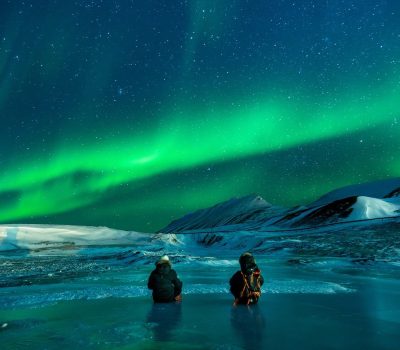
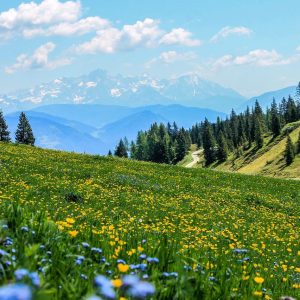
CREATE AN EXPERIENCE
Let's Make Memories Together
The voyage does not finish once you have left. We’ll transport you to a world of wonders and create amazing memories that will last long after you’ve returned home.
Away from the regular tourist traps, you’ll have a one-of-a-kind, authentic experience. A sensation created in an energizing setting that will be yours and yours alone. We will make this happen because old travels are great ones. The world’s wonders are within your grasp.





